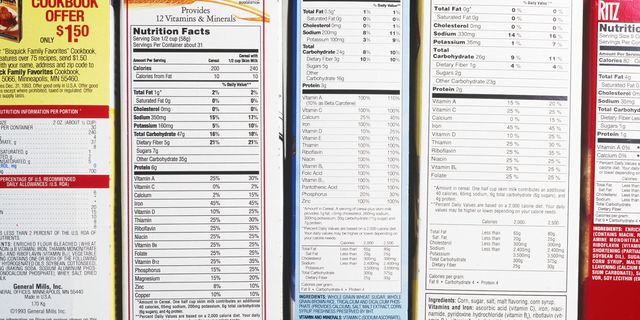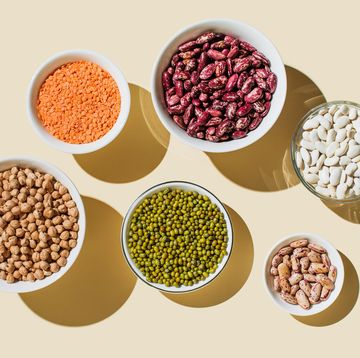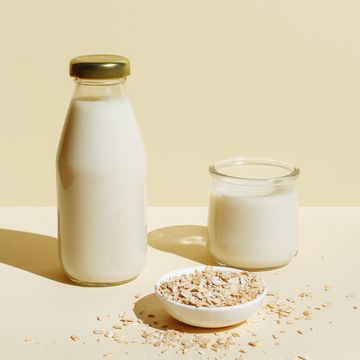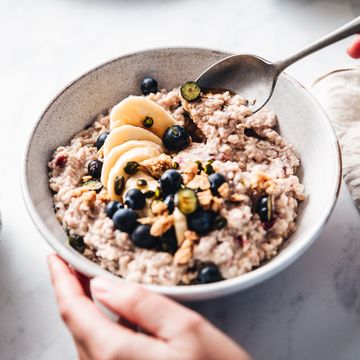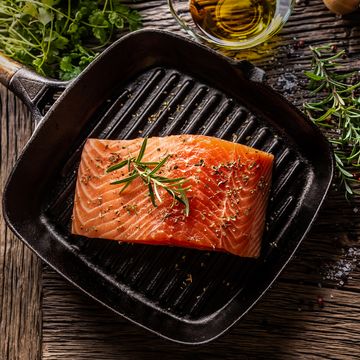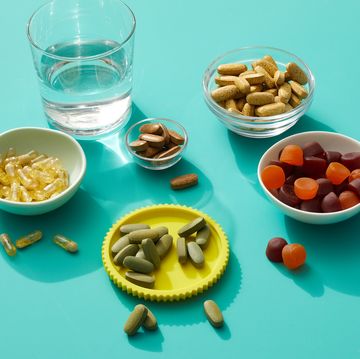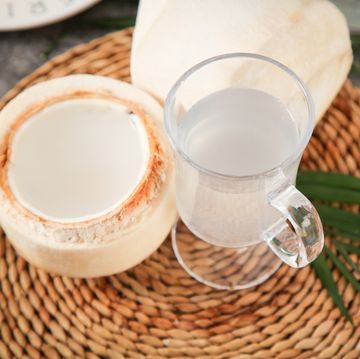At the Partnership for a Healthier America Summit in Washington, D.C., First Lady Michelle Obama introduced the brand-new design of the highly anticipated Nutrition Facts label, which will become mandatory on food labels by 2018. Here, we're breaking down what you need to know and why — and what you can do until the new label makes it's way to your grocery store in 2018.
1. You won't be able to "miss" the calories.
The new label will showcase calories so that they catch your eye quicker. They'll be printed in a larger size, bolded, and pronounced.
2. Say buh-bye to calories from fat.
The FDA label will remove "calories from fat," since this has become a near-meaningless term in the field of nutrition. If you're interested: Nine calories is equal to one gram of fat — so you can always take the fat grams and multiple them by nine if you're curious!
3. Serving sizes will be more realistic.
The FDA has updated the serving sizes to more accurately reflect what people are actually eating. The term for this is Reference Amount Customarily Consumed, or RACC. Having a more realistic RACC on food labels means seeing a higher number next to calories per serving — which can stimulate the better educated consumer to eat less, or to choose something different that they may know to be more satisfying. In the long-term, there may be a benefit to your wallet as well. Once the calories per serving (and servings per container) are more prominent on a food label, many consumers may be swayed to eat less of a processed food if you're only getting two servings for a higher price.
4. It will differentiate sugar vs. added sugar.
There's been tons of hype over the new label addition, "Includes Added Sugar" with an amount in grams and set daily value. Since many food products will include naturally occurring sugar and added sugar, this one could become increasingly beneficial to consumer. Expect to see this label on products containing any fruit or dairy, like yogurt or granola bars. Also noteworthy: When the new label was first proposed in 2013, industry insiders were peeved at the idea of including "added sugars" underneath total sugar, since many proucts (for example, dried cranberries) include some added sugar in order to remain fresh and retain flavor. That's why you'll notice that the new label going into affect has the word "includes" before added sugar, so that consumers can differentiate what's naturally occurring vs. what was added for flavor.
5. There are "new" nutrients to know.
Potassium and vitamin D are the new kids on the nutrition facts label (along with the minerals calcium and iron, which aren't changing from the original label). For some time now, vitamin D has been in the spotlight due to deficiencies seen in staggering numbers in the U.S. population. While you may start noticing it in packaged food labels, you won't find much of the nutrient in processed foods, largely because it's found naturally in fortified dairy products, fish, and fish oils, and animal liver. (Er, yum!) Potassium is one to be super-aware of on packaged food labels, largely because potassium acts as the "counterbalance" to the mineral sodium, ubiquitous in processed and packaged goods.

A registered dietitian with a Bachelor of Arts degree from Northwestern University and a Master of Science degree in Clinical Nutrition from New York University, Jaclyn “Jackie” London handled all of Good Housekeeping’s nutrition-related content, testing, and evaluation from 2014 to 2019. Prior to joining GH, she was a clinical dietitian at Mount Sinai Hospital. Jackie has also appeared as an expert guest on The Dr. Oz Show and The Today Show. She is also author of the book Dressing on the Side (and Other Diet Myths Debunked).
